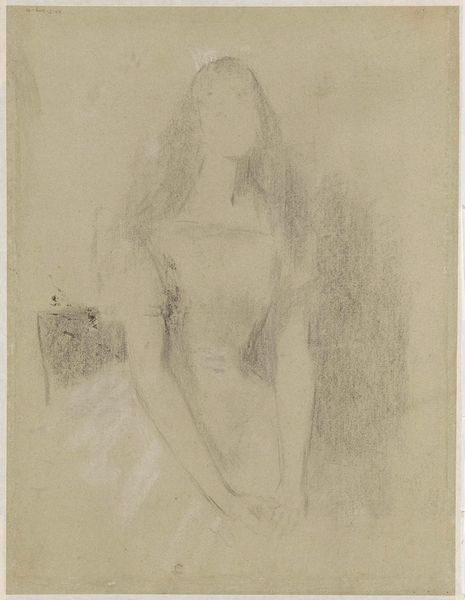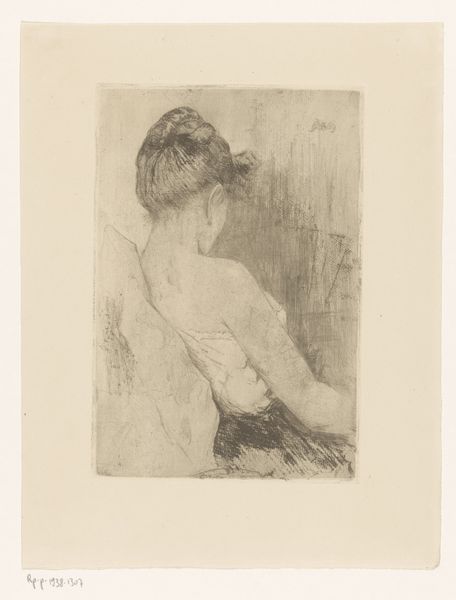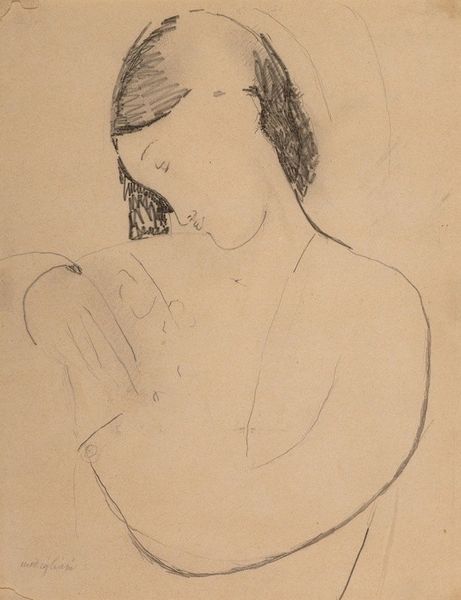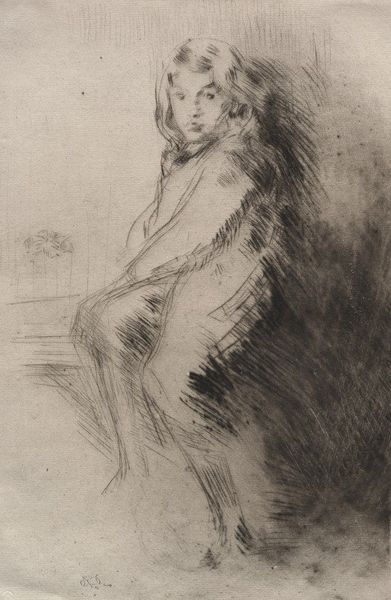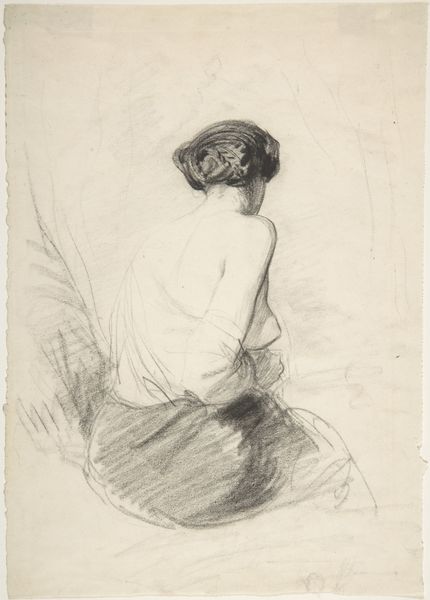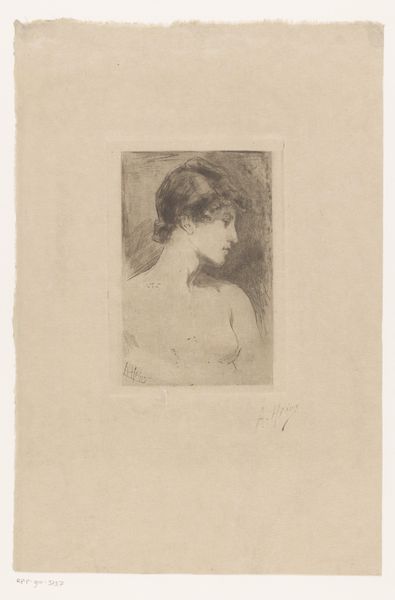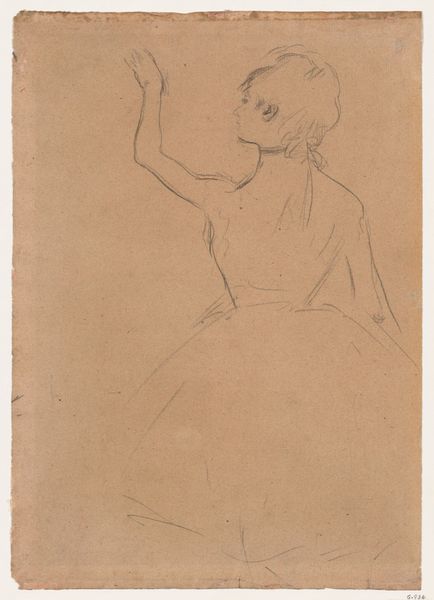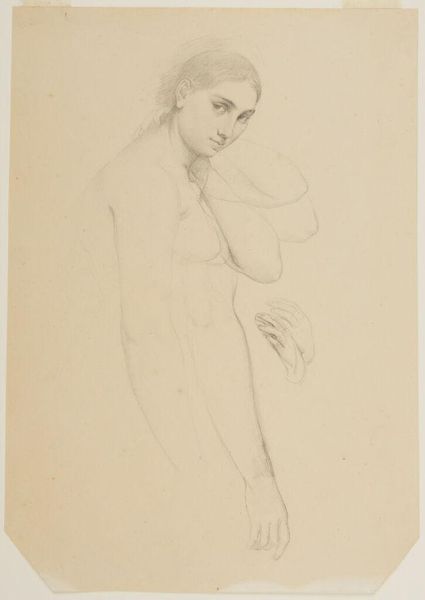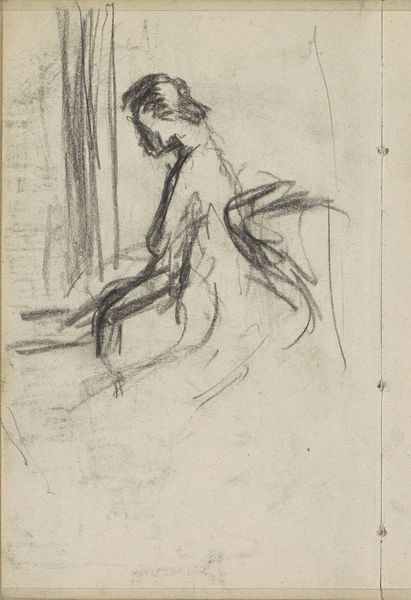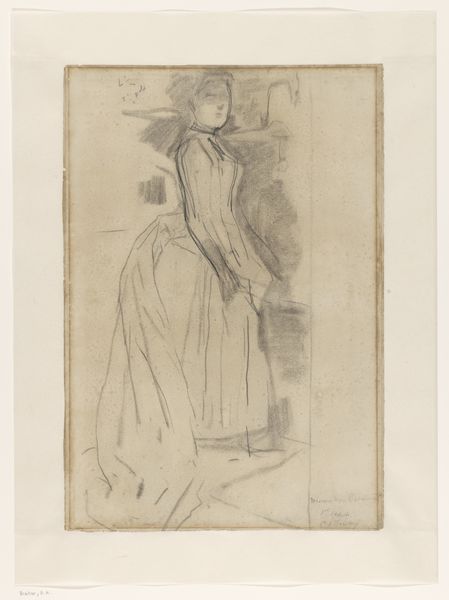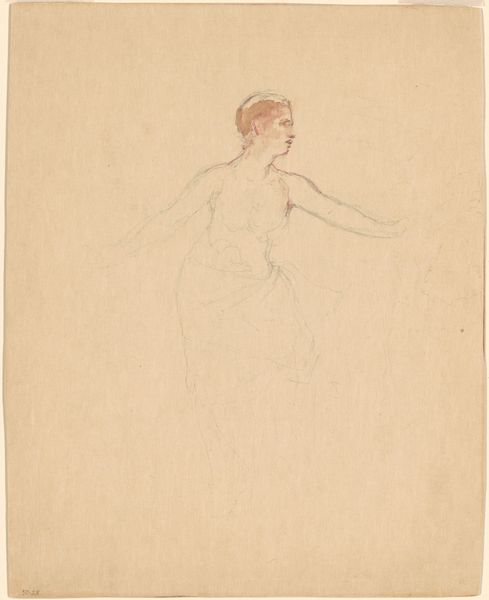
drawing, print, etching
#
portrait
#
drawing
# print
#
impressionism
#
etching
#
pencil sketch
#
figuration
#
pencil drawing
Dimensions: plate: 29.85 × 21.27 cm (11 3/4 × 8 3/8 in.)
Copyright: National Gallery of Art: CC0 1.0
Curator: We're looking at Mary Cassatt's "Mimi Holding a Japanese Fan," circa 1889. It's an etching and drypoint print. Quite delicate, wouldn't you say? Editor: Yes, my first impression is its fragility. It's as though the image might simply evaporate from the paper. There's a certain intentionality in the incompleteness of the composition, prompting reflection about what isn't represented, almost like the subject is in process of being rendered visible and present, much like a woman's experience in the late 19th century. Curator: The processes of etching and drypoint are significant here. Cassatt meticulously worked the metal plate. Lines were etched, creating grooves to hold ink, and the drypoint needle raised burrs that would catch further ink, giving depth and texture to the shadows. The physical labor is implicit to the creation of the print. Editor: Absolutely. Cassatt was clearly engaging with Japonisme at this time, evident in her use of asymmetry and flattening of space, common to ukiyo-e prints then circulating widely throughout artistic communities. Consider, too, the act of Mimi holding the fan: the material culture of Japanese aesthetics becomes a form of cultural performance within a Western, bourgeois setting. Curator: The choice of printmaking as a medium itself speaks to larger ideas about accessibility. Prints, unlike paintings, can be reproduced, democratizing art and allowing for wider distribution and consumption. Cassatt was business savvy, and surely conscious of this aspect. Editor: It also invites us to contemplate class and gender dynamics within artistic production and consumption. For Cassatt to represent women in domestic or intimate settings, consciously adopting a style influenced by Japanese art which had distinct associations with leisure and luxury, raises questions about the visibility, agency, and status afforded to women within that cultural milieu. Curator: The unfinished quality also adds another layer to this consumption. Is this an affordable piece because it’s an incomplete impression? Or does the unfinished state act to attract a specific kind of collector who would enjoy possessing this piece in part because of its state of making? Editor: Considering these intricate layers of process, history, and social significance deepens our understanding not only of the artwork itself but of the artistic landscape that Cassatt inhabited. Curator: I agree, engaging with these material considerations encourages us to ask critical questions about the construction and reception of the work. Editor: Absolutely, thinking about the cultural contexts enriches the experience.
Comments
No comments
Be the first to comment and join the conversation on the ultimate creative platform.
